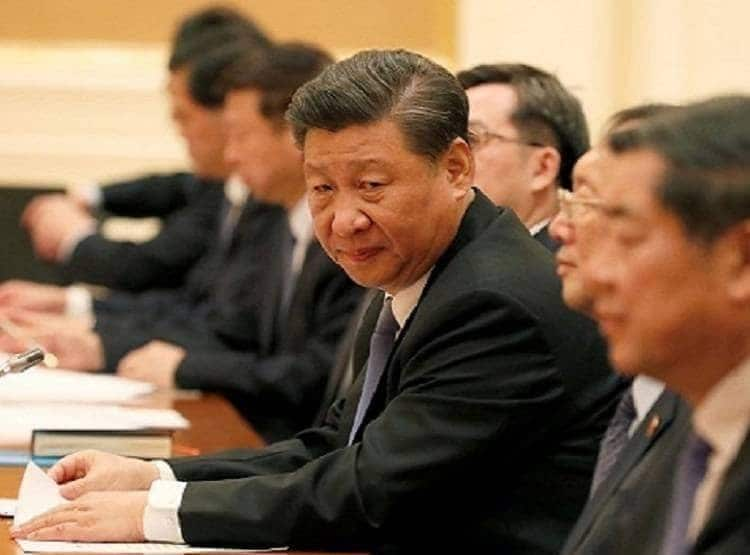Orlando: An engine of world growth for 20 years, the largest consumer of commodities and world’s number two economy has somehow slipped into “alternative investment” buckets for many global investors.
China’s property bust and increasingly interventionist government, along with deepening geopolitical fissures with the United States, have dramatically dimmed its allure as a destination for international capital.
China may not yet be “uninvestable”, as U.S. Commerce Secretary Gina Raimondo suggested U.S. companies believe, but many investors are recategorizing their reduced exposure – in some cases to alternative investment.”Alts” are typically assets outside the traditional stocks, bonds and cash buckets, like hedge funds, real estate and private equity. They are often riskier but potentially more lucrative bets, and are attractive for their diversification and hedging qualities. Crucially, they are non-correlated with traditional assets. This is where many investors see Chinese stocks and bonds now – a non-correlated, idiosyncratic play, effectively a hedge against their core bets.
That was the anecdotal evidence garnered from investors, asset managers and allocators on the sidelines of the recent “Hedge Fund Week” conferences in Miami. It is also supported by global capital flows trends.
One fund manager said he may put 5-10% of his portfolio in Chinese stocks but is fully prepared to lose it. A hedge fund manager overseeing billions of dollars of assets said he likes China’s “idiosyncrasies” and diversification qualities but noted that his investors’ money is mostly offshore, not onshore.
Alex Lennard, fund manager at Ruffer, admitted that the economic climate in China is “clearly awful” but his firm is putting money there, essentially as a hedge.
“It’s a small part of our portfolio, about 4%, but it does provide an offset to some of the other market ‘certainties’ that exist,” Lennard said. It’s worth noting that they are relative optimists on China. The wider consensus is far gloomier.
Read More: Pakistan: Independent Candidates, Backed By Imran Khan’s PTI, Lead In Final Election Tally
OUTFLOWS
According to Morningstar Direct, U.S. equity funds’ average asset-weighted exposure to Chinese stocks in December last year was 1.38%, down from 2.17% three years earlier, while their average equal-weighted exposure is down to 3.5% from 4.13%. U.S. emerging market funds’ allocation to China as a share of total EM exposure declined to 20.6% from 28.6% on an asset-weighted basis, and to 20% from 26% on an equal-weighted basis.
It is a similar pattern across global emerging market funds. The China portion as a share of their overall EM equity allocation has fallen to 19.5% from 27.1% on an asset-weighted basis and to 21% from 25.5% on an equal-weighted basis, according to Morningstar Data.
Demand for Chinese bonds should be stronger though, right?
China is included in the $1.2 trillion benchmark JP Morgan EMBI Global Diversified bond index, and there is now an in-built demand for Chinese bonds from the yuan’s emergence in recent years as an alternative international reserve currency. But China’s share of the $12 trillion global FX reserves pie has slipped to a four-year low of 2.37%, and has never been higher than 2.83%, according to the International Monetary Fund.
Figures from the Institute of International Finance show outflows from Chinese debt portfolios for seven straight months and only three monthly inflows in the last two years. Emerging market ex-China debt funds, meanwhile, have attracted inflows for the past seven months and in January drew in $47.3 billion, the most since October 2022 and one of the highest on record. Whichever way you slice it, investors of all stripes are taking chips off the Chinese table.
BURST OPTIMISM
This is not how many thought it would pan out. A Greenwich Associates survey of institutional money managers in 2020 showed that pension funds and endowments had 3-5% allocations to China and only 5% of North American institutions had any dedicated exposure to Chinese stocks.
Nearly a quarter of respondents said they planned to increase or significantly increase their dedicated allocation to Chinese equities in the next three to five years. Liang Yin, investment director at Willis Towers Watson, wrote in November that year that investors should consider raising their allocation to China to around 20% over the next decade.
But Beijing’s closer alignment with Moscow, fraying relations with Washington, and a strengthening interventionist hand in business and markets at home have scared a lot of horses. The findings of a recent survey by the Official Monetary and Financial Institutions Forum of 22 public pension and sovereign wealth funds managing $4.3 trillion in assets were startling – not one had a positive outlook for China’s economy or saw higher relative returns there.





































